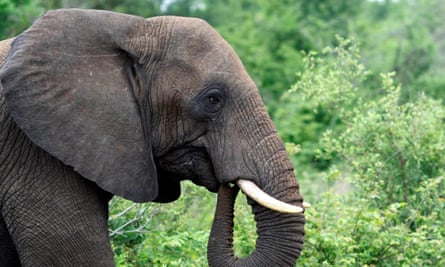The number of African elephants in the southern region has reached a stable level.
The latest study shows that the decline of African elephants in their central regions has stopped and their populations have become stable, following severe declines in the past 100 years.
The recent study presents the most compelling evidence yet that protected areas which are connected to other regions are more effective in maintaining stable elephant populations compared to isolated parks that act as “fortresses”. This is achieved by enabling elephants to freely migrate between areas, mimicking their natural behavior in the past.
When the population increases in areas with high levels of protection, pathways leading into less protected buffer zones provide a way for animals to spread out. In times of increased poaching or drought, these animals may also migrate. If the population decreases in the core areas later on, or if conditions improve, elephants have the ability to return. However, the buffer areas have a larger human population and scientists stress the importance of careful planning to prevent conflicts with elephants, which can be dangerous to people and cause damage to crops.
On the other hand, researchers discovered that isolated parks, which restrict human access and contain animals, can result in unsustainable population growth. This, in turn, may lead to widespread deaths or culling.
Dr. Robert Guldemond, part of the research team at the University of Pretoria in South Africa, stated that for many years, the focus in southern Africa has been on poaching and other dangers. However, significant progress has been made to combat these issues, and the positive impact has not been adequately highlighted.
Dr. Ryan Huang, a researcher at the University of Pretoria, expressed optimism regarding the current state of elephants, stating that there has been a shift from simply preventing their decline to actively working towards long-term stability.
Professor Stuart Pimm, from Duke University in the United States, and a member of the team, stated, “It is crucial to safeguard elephants, but it is also imperative to establish connections among them. Our actions have divided the globe, and it is our responsibility to reunite it.”

The study, which was published in the journal Science Advances, analyzed data from 713 surveys in 103 protected areas stretching from Tanzania to southern Africa to determine the rate of population change between 1995 and 2020. The data included information on over 290,000 savannah elephants, representing 70% of the continent’s total population.
Over the past 25 years, researchers observed a 0.16% annual increase in overall population growth. Pimm stated that conservation efforts have successfully stopped the decline of elephants in southern Africa.
The most stable populations were mostly found in large, well-protected lands that were connected to buffer areas. Elephant populations in buffer areas were more likely to decline as a result of less suitable habitat or being killed, but they serve a useful function, said Pimm: “It is about trying to restore a sort of natural dynamic, and natural dynamics can be brutal.”
Parks that are isolated and well-protected have shown significant growth rates and increases in population in certain instances. However, if these populations become too dense, it can harm the habitat or require costly and challenging relocations due to the lack of dispersal options. In the past, extensive culling has also been utilized to manage unsustainable numbers.
According to Huang, the reason behind the tragic loss of 350 elephants in northern Botswana in 2020 could be due to their inability to migrate. He suggests that the elephants were likely exposed to harmful algal blooms in the water and were compelled to drink it. Huang believes that the capacity to move and spread out is crucial for maintaining a stable population in these regions.
The study revealed that certain regions in southern Africa continue to experience significant declines due to poaching, including south Tanzania, northern Zambia, and Zimbabwe. High levels of poaching are also believed to occur in east and west Africa, which were not included in the study.
WWF’s senior program advisor for Africa, Katherine Elliott, expressed positivity about the stabilization of southern savannah elephant populations and credited it to unwavering conservation efforts. Nonetheless, she acknowledged that some populations have seen substantial declines and cautioned against becoming too comfortable with the current progress.
She expressed that the strengthening of links between different areas is crucial for elephants and other animals. The actions of humans are continuously disrupting this connectivity through the construction of roads, fences, and the expansion of agriculture and mining. As the climate crisis poses a growing threat, maintaining habitat connectivity is even more vital for allowing species to relocate from areas where the environment is deteriorating.
Guldemond stated that although researchers have identified possible links among the elephant populations in southern Africa, effectively addressing conflicts between humans and elephants will require thorough evaluation of specific regional elements and is still in progress.
“If the individuals in the environment are not tended to, any efforts towards aiding elephants are rendered meaningless.” The savannah encompasses approximately 50% of Africa and provides shelter for 500 million individuals.
The current estimated population of African elephants is 415,000. In the past, there may have been over 25 million elephants living on the plains, but due to the growth of human populations, it is unlikely that such large numbers will be seen again.
Source: theguardian.com


